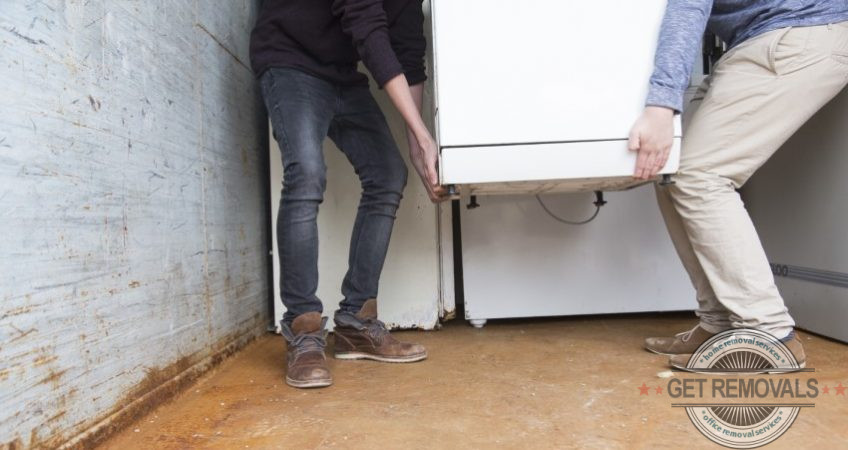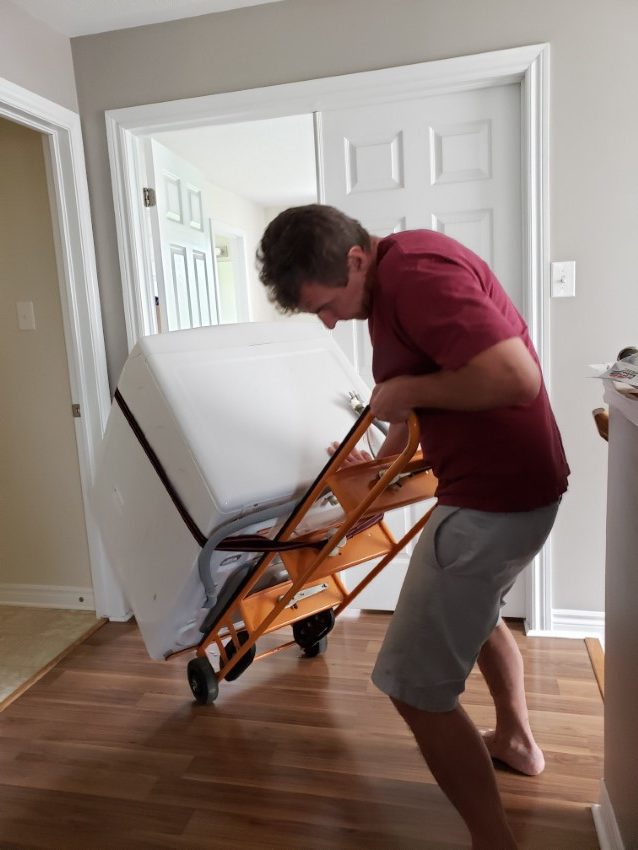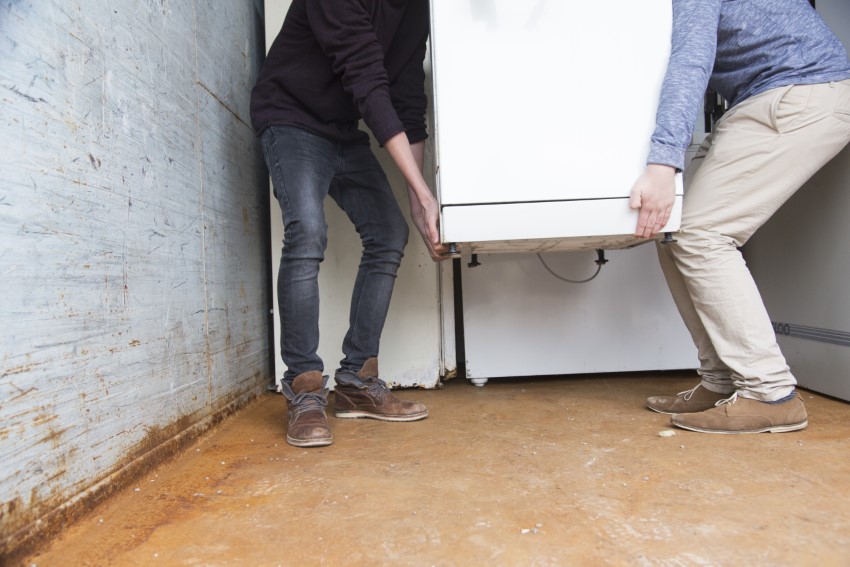
If you are moving house or apartment to another, and you are planning on bringing most of your furniture and appliances with you, there will be a few questions that might arise. Using a removal company can ease the process significantly. How to move a washing machine you deem too valuable for your household to part with is definitely going to be one of those questions.
Washing machines fall into the category of major appliances for every household. Other major appliances that you will probably move include the oven, a fridge, and a freezer. All of these are quite bulky, often heavy, and overall – difficult to handle. Washing machines weigh a lot and require special precautions and tools to move them safely. Because of these reasons, you will need to prepare carefully for the process of their relocation, in order to make sure that you do it safely. Thus the question of how to move a washing machine becomes quite important, if not vital. From bringing the washing machine downstairs to be loaded on the removal company’s van, to securing it for transportation, you are going to need skills, tools, and know-how that are hard to obtain through just a quick Google search. However, you can rely instead on the tested tips and tricks we gathered on how to move washing machines safely, quickly, and in a hassle-free manner.



What Equipment Do You Need to Move a Washing Machine, Including Transit Bolts?
Like when transporting other major appliances, moving a washing machine requires some specialized tools and equipment. These will ensure you are going to complete the process faster and without damage to the appliance. Last but not least, you will protect yourself and the people helping you out from unnecessary and quite unpleasant injuries.
Here is a complete list of the correct equipment you are going to need to successfully move your washing machine. All the necessary supplies easily be obtained from your local home appliances store.
- Duct tape
- Appliance dolly: An appliance dolly is essential for safely transporting the washing machine out of a property and into a moving van. You can rent or purchase one for future use with other large household appliances.
- The washing machine manufacturer issued a user manual
- Slip joint pliers
- Transit bolts (also known as shipping bolts)
- Washer locks: These are small metal rods inserted into designated slots behind a washing machine to immobilize and stabilize the drum during transportation, preventing damage to the suspension mechanism.
- A bucket
- A moving vehicle big enough to accommodate your machine
- Thick blankets such as furniture blankets
- Moving belts or moving straps
It is important to handle the machine with care as it is a heavy appliance. Assembling all those supplies is not particularly hard, but it can be costly if you purchase most of these things for a single washing machine moving job. So it is good to keep in mind that in addition to the removal van, you can rent most of these from your trusted professional removals company as well.
Consult Your Washer’s User Manual
Before you roll up your sleeves and get your washing machine moved, you need to make sure to consult with the instruction manual. The reasoning behind this is that the user manual will provide you with invaluable information about the ins and outs of moving your washing machine. These include the exact position of the small metal rods, also known as transit bolts, and how to actually safely place those transit bolts. How to secure the washing machine door during transportation and have the washing machine’s drum immobilized, so that the drum suspension mechanism doesn’t get broken during the transit.
In addition to the intricacies concerning the transit bolts and the other safety measures that you need to take to guarantee the hassle-free transportation of your washer unit, the user manual will help you with the disconnection of the washing machine from the electrical network and the water supply. You don’t want the water valve, the water supply hose, or the drain hose to give in while you are disconnecting them, causing harm to yourself and your place. Locate the water supply valve and turn it clockwise to switch off the water supply.
Drain and Disconnect Your Washing Machine, Including the Water Supply Hose
Now that you are done with the preparations for the move of your washing machine, you can get on with the actual job. Start by disconnecting the power cable from the electrical supply. Tape the power cord using duct tape to the side of the machine. In this way, you will prevent it from dangling during transportation. The next step is to close the water supply to the machine. Only then you can proceed to disconnect the actual water supply hoses. Make sure to drain any excess water left in the hose in the bucket you prepared before taping this one to the side of the washing machine with duct tape as well.
Now you can do the same with the drain hose attached. Here you will need to remove the dirty water that may possibly be left in the hose in the bucket, and proceed to tap this one to the wall of the machine as well. Don’t forget to empty and clean the drain filter as well. Use the joint pliers to place the transit bolts securely into their place. Double-check with the user manual to make sure they are indeed in their correct positions. Now you are ready to proceed to lifting, securing and transporting your washing machine to the desired destination.
Use an Appliance Dolly
You can always call at least a couple of friends or family members to help you lift the washing machine. The smartest thing to do is to use their help to just load the machine onto a moving dolly and then use the dolly to bring the appliance to the removal van, keeping the washing machine upright. There you can use a little more help to load the washing machine in the lorry and secure it with the thick blankets and moving straps and you are good to go. Make sure to move the washing machine safely by following all necessary precautions. One thing that is crucial not to forget is to remove the transit bolts when you are reattaching the washing machine at the new place.
Lastly, if the process seems to be too time-consuming or complicated for you, or you don’t have available family members or friends to ask for help, you can always opt for having your trusted professional removals company handle the task for you. Having the pros move your washing machine will definitely save you time and energy. Once the move is complete, you may want to protect the washing machine’s electrical components by covering them with a plastic bag. And once you arrive at your new location, you can enjoy your freshly cleaned clothes by running a wash cycle in your new washing machine.
